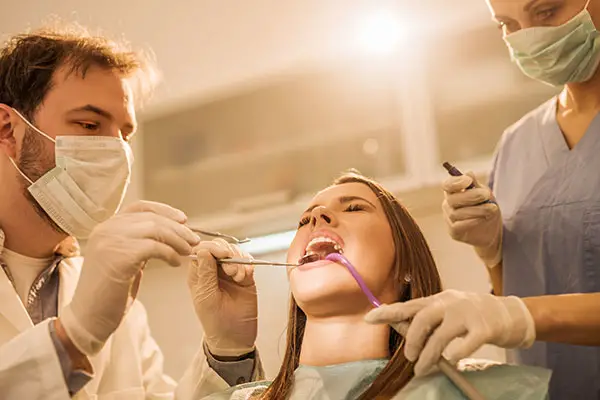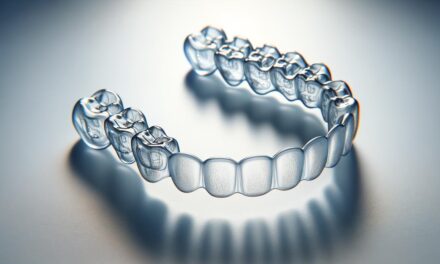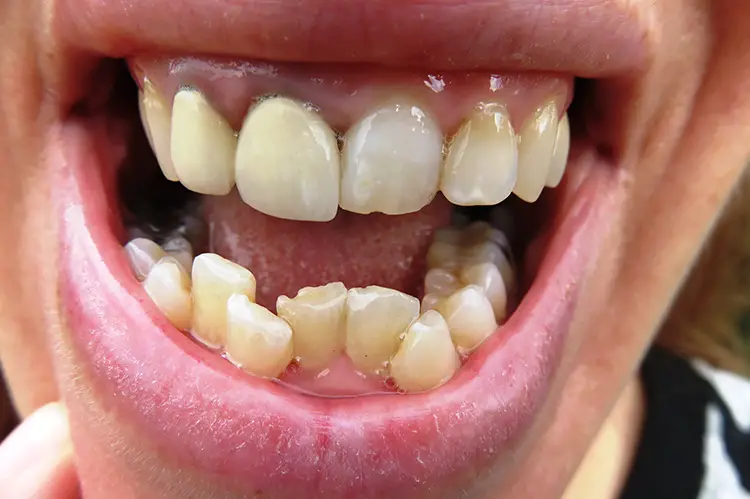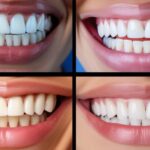Braces are considered the most effective bite correction treatment short of jaw surgery but they have one significant drawback: time. It may take a few years of wire tightening and adjustments before a full result can be seen. With teenagers, this isn’t a huge issue. By the time their braces come off, they will usually be nearing the end of their high school education and won’t have to feel anxiety about the flash of metal on their teeth causing a distraction during an important job conference or have to worry about remembering to keep with their appointments and find time for the upkeep of their braces while trying to balance a tight schedule and taking care of a family. With adults, time is always a big factor.
A solution called Periodontally Accelerated Osteogenic Orthodontics, or PAOO for short, was introduced by the periodontist-orthodontist duo of Dr. Thomas Wilcko and Dr. William Wilcko. This bite correction method is fairly new. Even though the first foundations of the treatment emerged back in the 1990s, advancements and popularity among orthodontists didn’t surge until within the last decade. It’s now being a more commonly suggested option and is often presented under the name ‘Speedy Orthodontics’.
What is PAOO?
The method is a hybrid between periodontal surgery and braces that corrects bite issues without being as invasive as jaw surgery but less time consuming than braces. The driving principle behind PAOO is temporarily making the bone around the teeth more flexible so that the teeth can be moved at a quicker pace than can be achieved with braces.
Although the idea of damaging the jaw bones may be cringe-worthy, the end result is supposed to strengthen the bone. After the bone is lightly damaged with either having lines cut into it or small dots drilled over the surface, a grafting material is placed over it that will promote new bone growth. The combination of surgical damage and grafting allows the bones to be more pliable for a short time frame and then strengthen considerably as it heals so there is no long term weakness in the bone structure after the procedure.
Once the surgical portion of the treatment is completed and the bone is more workable, braces are put on the teeth. This braces application is the same as it is with regular braces treatment but it is accelerated and the adjustments are made in shorter intervals. Rather than wearing braces for two or more years, PAOO requires braces for an average of only 3 to 9 months, followed by using a retainer for at least 6 months.
Is Periodontally Accelerated Osteogenic Orthodontics Bite Correction Painless?
As with any surgical treatment, pain is to be expected. Due to numbing agents or the choice of multiple types of anesthesia, you likely won’t feel pain during the procedure. If you choose to remain awake during it, you will feel pressure or tugging but pain shouldn’t be a huge worry.
This bite correction surgery can be performed in a few different ways. The most extensive version involves cutting the gum tissue and flapping it back to expose the bone so that it can be cut or drilled into before the grafting material is placed over it. With this method, you will have quite a few stitches along your gum line to secure the flap back into its proper place and allow it to heal correctly. These can be uncomfortable and a restricted diet will be needed for at least week afterwards.
The second method is less invasive. It consists of drilling into the bones through the gums so no flap is required. While this method is quicker and less painful, it doesn’t allow for any grafting and the benefit of a significantly stronger bone structure isn’t provided with this method. Another drawback to this method is that it requires a bit of hammering to puncture the bone and this can result in dizziness, as well as being anxiety-inducing. If you’re someone that is already nervous about seeing a dentist, this may not be a good method to choose because although it typically won’t cause you pain during the procedure, the technique can be intimidating.
Regardless of what method is used, the bone is still being damaged so pain and soreness will occur while you’re healing. Over-the-counter pain medications can not be used after a PAOO surgery because the chemical properties of the medications hinder the biological process that make the bones more pliable. Instead, narcotic pain killers are prescribed and patients are advised to use ice to reduce swelling, along with avoiding hot foods.
Along with pain medications, antibiotics are also prescribed to severely lessen the chances of infection and the pain that comes with it. If the instructions given by the orthodontist are followed, the overall pain should be very manageable and short-lived. Within a week or so, you should be entirely pain free although the typical soreness associated with getting braces adjusted may occur periodically throughout the duration of the second half of treatment.
Will PAOO Correct Your Bite?
The majority of people that undergo PAOO to correct their bite have good results. Braces are highly efficient for realigning teeth and by adding a surgical procedure onto the treatment, it increases the effectiveness. The long-term outcome is generally good as well. Due to the grafting and strengthening of the bone, the teeth are less likely to shift back into their original position so there’s a lower chance of the bite issues reoccurring. However, if you choose to have the less invasive version of the surgery done, without the bone being exposed and grafting, you won’t experience this benefit and may need to continually use a retainer.
This treatment method will correct most of the common bite issues but it will not help if the problem is to a skeletal abnormality in the jaw, such as either the upper or lower jaw being too short or too long. Additionally, not everyone is eligible for PAOO. Due to the heavy involvement of gum tissue and the bone beneath it, those with gingivitis or periodontal disease can not use this method. The periodontal problems would have to completely taken care of before PAOO is an option. Those with diabetes, bones disease, a compromised immune system, or those that use over-the-counter pain medications on a daily basis for chronic inflammation or pain may also not be able to use this form of bite correction.
PAOO is an effective bite correction alternative to the standard braces treatment and the price is around the same amount as you’d have to pay for regular braces. The price can vary depending on the surgical method used and the particular orthodontist doing the procedure but most pricing information available indicates that the cost is under $6,000. Although it is more invasive than braces, it requires only half the time to get a result. If waiting more than two years for a new smile is not something you’re interested and you don’t mind a little bit of short-term discomfort, PAOO is a good option to look into.
Key Features of PAOO (Periodontally Accelerated Osteogenic Orthodontics):
- A bite correction combination of mild surgery and braces
- Mild to moderate pain to be expected after the surgical half of the treatment
- PAOO is quicker than using braces alone and treatment lasts only 3 to 9 months
- It will correct most bite issues aside from those cause by jaw abnormalities.
- A clear bill of general and periodontal health is needed before the treatment can begin.
- It has a good long-term outcome and retention rate
- The cost estimate is not concrete but most of the information available indicates that it will cost less than $6,000.
Citations:
Alghamdi, A. S. (2010, January). Corticotomy facilitated orthodontics: Review of a technique. The Saudi Dental Journal, 22(1), 1-5. doi:10.1016/j.sdentj.2009.12.008
Amit, G., Jps, K., Pankaj, B., Suchinder, S., & Parul, B. (2012). Periodontally accelerated osteogenic orthodontics (PAOO) – a review. Journal of Clinical and Experimental Dentistry. doi:10.4317/jced.50822
Lakkakula, R., Dr. (2014, July 17). Periodontally Accelerated Osteogenic Orthodontics.
Nowzari, H., Yorita, F., & Chang, H. (2008, May). Wilckodontics–an alternative adult orthodontic treatment method: Rational and application. Compend Contin Educ Dent., 29(4), 200-206.










